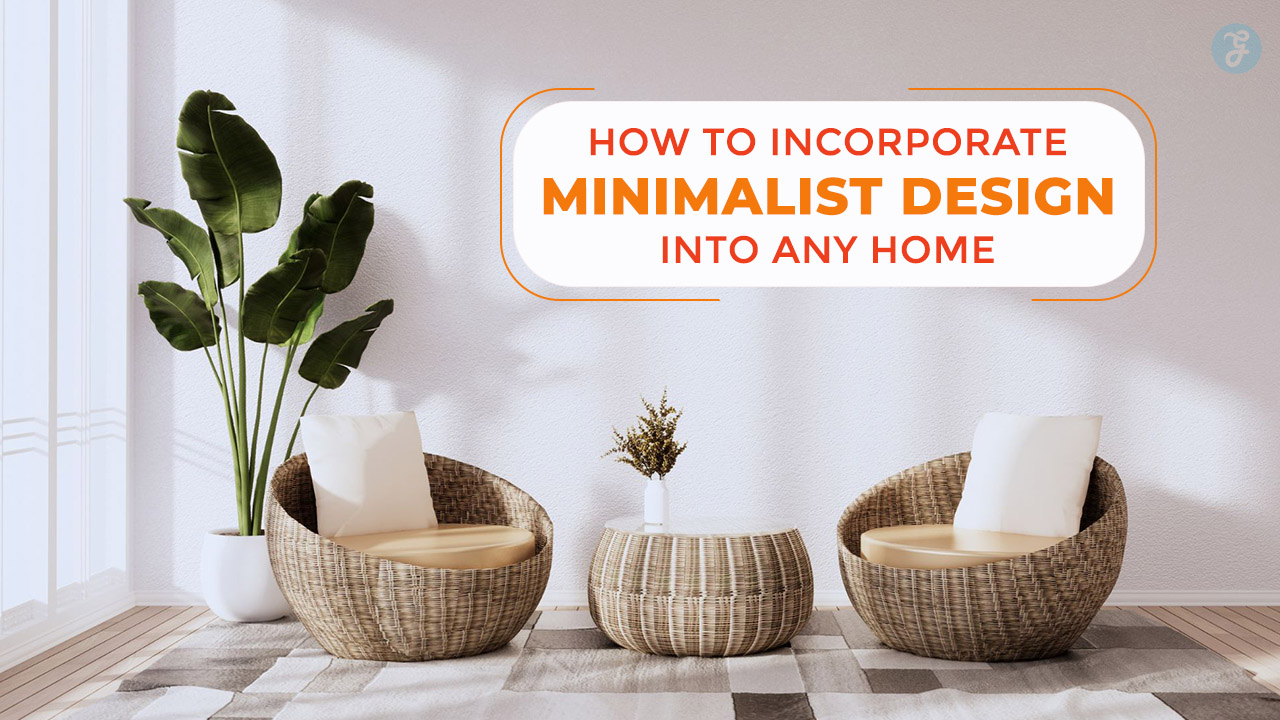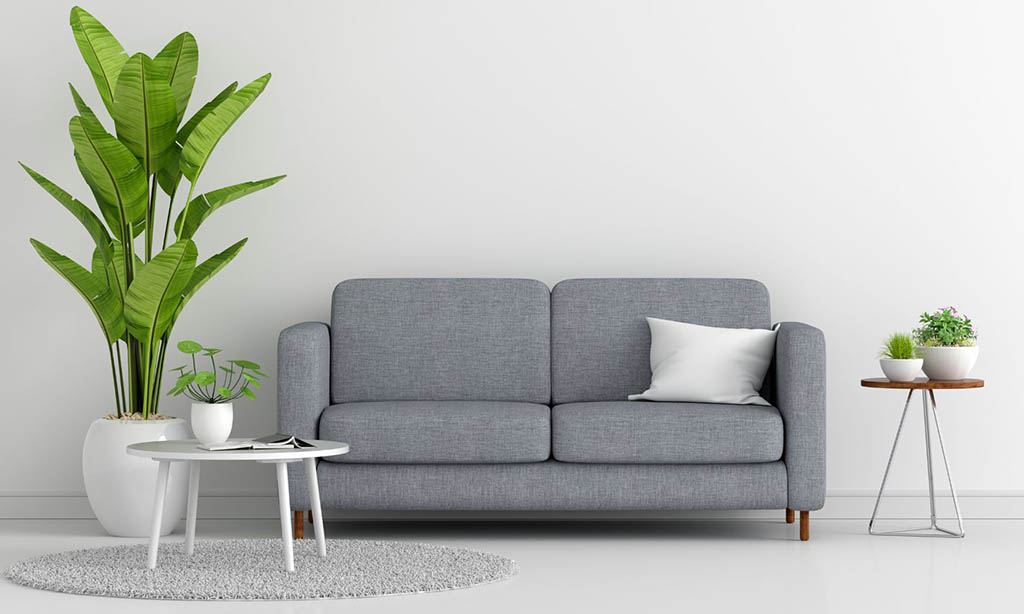Does your home feel cluttered or overwhelming? Many people face this issue, struggling to find peace in their living space. A messy and busy house can make it hard to relax or focus on what matters most.
Minimalist design offers a simple fix. This style uses clean lines, neutral colors, and natural materials to create airy, calm spaces. In this blog, you’ll learn how to bring minimalist interior design into your home step by step—no matter its size or style.
Ready for sleek and stress-free living? Keep reading!
Key Principles of Minimalist Design
Minimalist design values simplicity and function in every aspect. It creates calm spaces with clear surfaces and balanced layouts.
Emphasize functionality and simplicity
Good design focuses on purpose. Choose furniture that serves multiple functions, like a sofa bed or a desk with storage. “Less is more” guides minimalist lifestyle choices—clear surfaces create calm and order.
Avoid clutter by selecting quality over quantity.
Simplicity shines through clean lines and useful items. Use shapes like rectangles or circles for balance in the design. Open spaces make rooms feel airy and inviting, even in small homes.
These changes improve comfort without sacrificing style.
Focus on clean lines and open spaces
Clean lines create a neat, uncluttered look. They make rooms feel spacious and open. Choose furniture with simple shapes and avoid excessive details. Smooth surfaces on tables or shelves add to this minimalist style.
Clear surfaces help declutter the space, making it more organized.
Open spaces let light flow naturally, enhancing an airy atmosphere. Use fewer decor items to keep the room breathable. An open floor plan works well for larger areas but can also benefit smaller homes by reducing visual weight.
Aim for balance between function and beauty for a calm and orderly interior design.
Choosing a Minimalist Color Palette
Neutral colors create a calming base and keep the space uncluttered. Soft tones can bring balance while still adding charm.
Stick to neutral tones and subdued hues
Neutral tones like beige, gray, and soft whites create a calm atmosphere. These shades help rooms feel open and uncluttered. Subdued hues such as muted greens or dusty blues can add a touch of color without overwhelming the space.
Earthy shades like sand or clay bring warmth to minimalist interior design. Pair natural materials like wood or stone with these colors for harmony. A balanced color palette makes any home feel serene yet inviting.
Simplicity is the ultimate sophistication. – Leonardo da Vinci
Add warmth with soft whites or earthy shades
Soft white tones can create a cozy, minimalist home. Pair them with natural materials like wood or linen for a warm and inviting look. Earthy shades such as beige, terracotta, or olive green work well too.
These colors bring depth to the space without overwhelming it.
Use soft whites on walls or large furniture pieces to keep things bright and airy. Add earthy-colored throw pillows, rugs, or curtains for balance. A neutral palette keeps your interior design calm while adding subtle charm to your minimalist style.
Furniture and Decor Essentials
Choose pieces that are both practical and visually appealing. Limit clutter to create a calming, open space.
Opt for multi-functional furniture
Multi-functional furniture saves space and keeps your home clutter-free. A storage ottoman, for example, can act as seating while hiding items inside. Sofa beds are another practical choice, offering comfort during the day and a cozy sleeping area at night.
Pieces with clean lines work well in minimalist interior design. Foldable tables or wall-mounted desks free up floor space when not in use. These designs focus on functionality while maintaining simplicity—key principles of a minimalist style.
Incorporate a few meaningful, personal items
Place a small piece of minimalist art on a shelf or wall. Use clear surfaces to display family photos in simple frames. Keep personal items limited but meaningful, like a favorite book or travel souvenir.
These touches add warmth without disrupting the clean aesthetic of minimalist interior design.
Choose items that align with your minimalist style and color palette. A handcrafted ceramic bowl or natural materials like wood can balance modern furniture. Focus on quality over quantity; every item should serve a purpose or spark joy in your home.
Enhancing Textures and Materials
Natural textures bring life and warmth to a space. Mix surfaces carefully to create balance and interest.
Use natural materials like wood, stone, or linen
Bring nature into your home with materials like wood, stone, or linen. Wood adds warmth and charm while keeping the minimalist style clean. Use wooden tables, shelves, or floors for a timeless look.
Stone works well in bathrooms and kitchens. Choose marble counters or slate tiles to add texture without clutter.
Linen is soft yet durable, making it ideal for curtains, cushions, or bedding. Neutral tones of these materials match a minimalist color palette perfectly. These natural elements enhance both depth and calmness in any space.
Keep designs simple to let their beauty shine through!
Layer varied textures to add depth
Use natural materials like wood, stone, or linen to make a minimalist space feel alive. A wooden coffee table next to a soft linen couch can create balance. Add a simple wool rug for warmth without cluttering the room.
Mix smooth and rough surfaces for contrast. Pair sleek metal light fixtures with woven baskets or ceramic vases. Small details like textured throw pillows make rooms more inviting while keeping the minimalist style intact.
Lighting and Atmosphere
Soft, warm lighting sets a cozy tone in any space. Let natural light flow freely to create an open and fresh mood.
Make use of warm, ambient lighting
Warm, ambient lighting creates a soothing atmosphere in any minimalist home. Use soft-glowing lamps or LED bulbs with warm tones to make spaces feel inviting. Keep the design simple by avoiding harsh, direct lights.
Layer different light sources, like pendant lights and floor lamps, for added depth.
Natural light also plays a big role in minimalist interior design. Let sunlight fill the room through large windows or sheer curtains. This enhances an open and airy feel while highlighting clean lines and clear surfaces.
Leverage natural light for an airy feel
Open windows to flood rooms with light. This makes spaces feel larger and more inviting. Minimalist interior design benefits from this brightness by highlighting clean lines and clear surfaces.
Use sheer curtains or none at all for uninterrupted sunlight. Position mirrors on walls to reflect natural light, spreading it across the room.
Choose furniture in light hues or natural materials like wood to enhance softness. An open floor plan paired with big windows can create a seamless flow of airiness throughout your home.
Scandinavian design often embraces this approach, keeping the atmosphere calm and fresh while staying true to minimalist style principles.
Takeaways
Minimalist design can transform any home with ease. Focus on clean lines, neutral tones, and open spaces to create a calm atmosphere. Choose furniture that is both stylish and functional for a clutter-free look.
Bring warmth through natural materials like wood or soft fabrics. Use lighting to enhance the space and highlight key areas. Start small, make thoughtful choices, and enjoy a simpler way of living!
FAQs
1. What is minimalist interior design?
Minimalist interior design focuses on simplicity, clean lines, and clear surfaces. It uses natural materials and geometric shapes to create a calm and functional space.
2. How can I start incorporating a minimalist style into my home?
Start by decluttering your spaces to embrace the “quality over quantity” approach. Focus on keeping only essential items while maintaining clear surfaces in every room.
3. What are some common elements of a minimalist home?
A minimalist home often includes neutral colors, natural materials like wood or stone, simple furniture designs, and Scandinavian-inspired touches for warmth.
4. Can an entrance hall have a minimalist look?
Yes! Keep the entrance hall tidy with minimal decor—use sleek storage solutions and focus on functionality to maintain a clean aesthetic.
5. Should I hire an interior designer for creating a minimalist lifestyle at home?
An experienced interior designer or an interior design firm can help you achieve balance in your space by selecting the right pieces while sticking to the principles of minimalism.











































